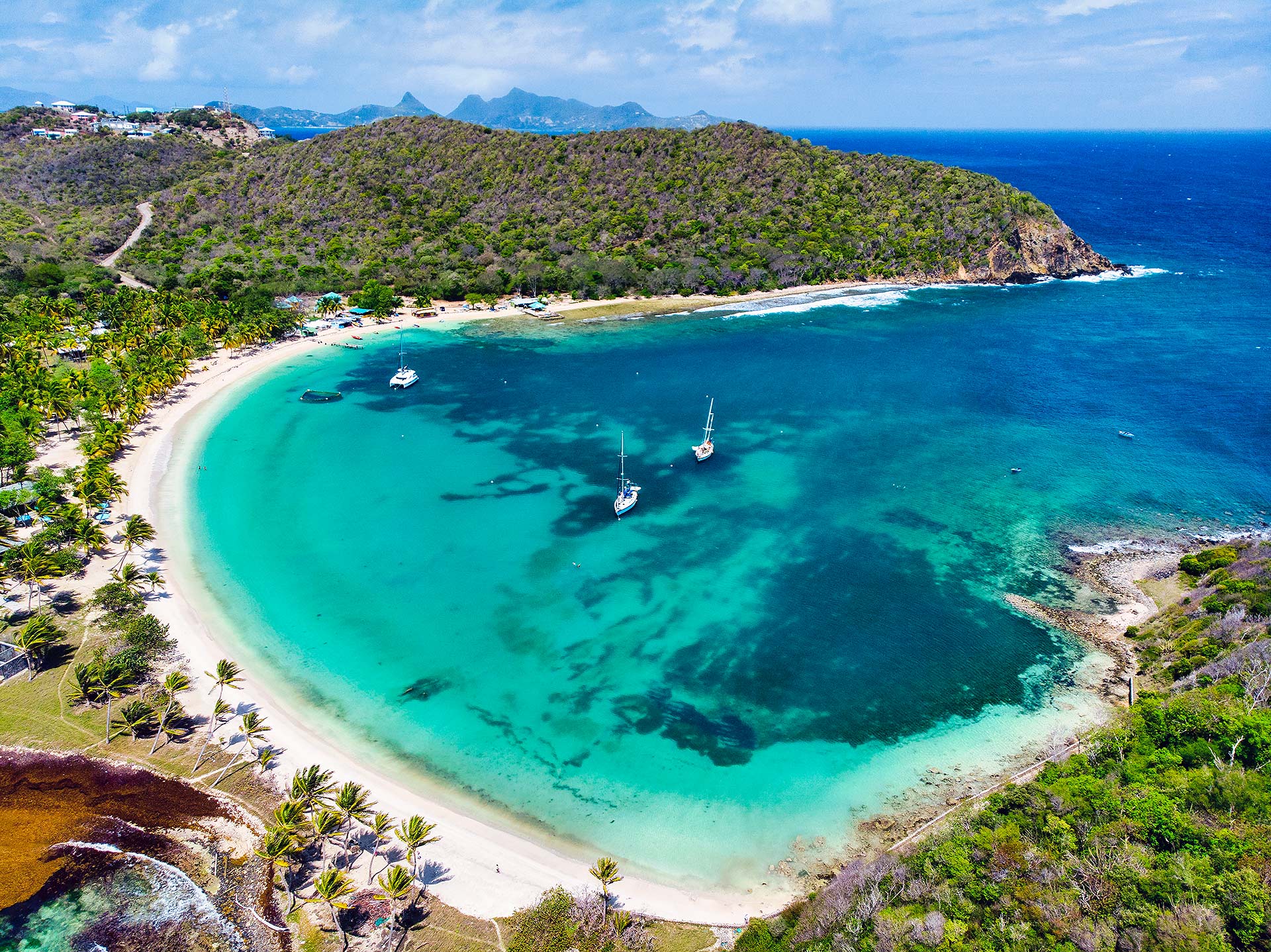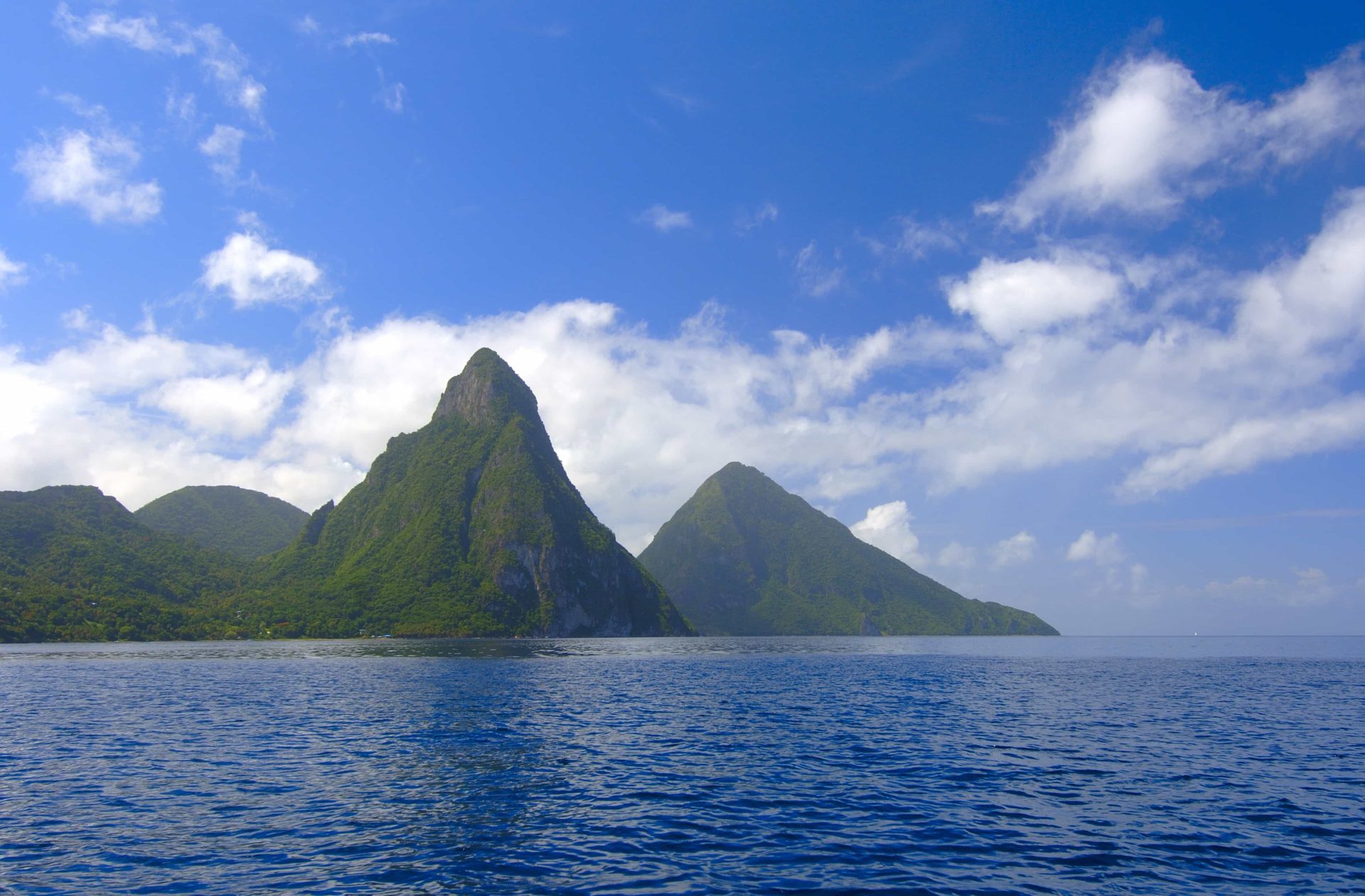Geographical Context of the Windward Islands
:max_bytes(150000):strip_icc()/aerial-shot-of-cruz-bay-st-john-in-us-virgin-islands-165581255-58dea04e3df78c5162cf9584.jpg)
The Windward Islands are a chain of islands located in the eastern Caribbean Sea. They form the eastern boundary of the Caribbean Sea and lie between the Greater Antilles and the Lesser Antilles. The islands are characterized by their mountainous terrain, lush vegetation, and tropical climate.
The Windward Islands include the islands of Dominica, Martinique, Saint Lucia, Saint Vincent and the Grenadines, Grenada, Barbados, and Trinidad and Tobago. The islands are of volcanic origin and are covered in lush rainforests. The climate is tropical, with average temperatures ranging from 24 to 29 degrees Celsius. The islands receive an average of 1,500 to 2,000 millimeters of rainfall per year.
De Windward Islands, a string o’ islands in de Caribbean Sea, might be in de path o’ Tropical Storm Beryl. Check out where is beryl headed for de latest updates on de storm’s track. De Windward Islands, known for dere lush greenery and beautiful beaches, are home to a variety of cultures and traditions.
Topography, Windward islands
The Windward Islands are characterized by their mountainous terrain. The highest point in the region is Mount Pelée on Martinique, which has an elevation of 1,397 meters. The islands are also home to several active volcanoes, including Soufrière Hills on Montserrat and La Soufrière on Saint Vincent.
Climate
The Windward Islands have a tropical climate, with average temperatures ranging from 24 to 29 degrees Celsius. The islands receive an average of 1,500 to 2,000 millimeters of rainfall per year. The rainy season runs from May to November, and the dry season runs from December to April.
Di Windward Islands a wah chain ah islands deh ina di Caribbean Sea. Dem get dem name from di way di wind does blow from di east. Recently, Storm Beryl pass through di area, bringing heavy rain and strong winds.
Thankfully, di storm no cause too much damage, and di islands are now recovering. Check out di path of Storm Beryl to see where it went.
Natural Resources
The Windward Islands are rich in natural resources. The islands are home to large reserves of oil, gas, and minerals. The islands also have a wealth of agricultural resources, including sugarcane, bananas, and cocoa.
Historical Significance of the Windward Islands

The Windward Islands hold a pivotal place in pre-Columbian and colonial history, serving as a crossroads for indigenous cultures and a battleground for European powers.
Prior to European arrival, the islands were inhabited by various indigenous groups, including the Arawak and Carib peoples. These groups developed distinct cultures and societies, leaving behind archaeological evidence of their presence.
European Influence
The arrival of European explorers in the 15th century marked a significant turning point in the history of the Windward Islands. European powers, such as the British, French, and Dutch, competed for control of the islands, establishing colonies and exploiting their resources.
- The British established a strong presence in the islands, with Barbados becoming a major sugar colony. They also played a role in the slave trade, bringing enslaved Africans to work on plantations.
- The French established colonies in Martinique and Guadeloupe, developing a plantation economy based on sugar and coffee.
- The Dutch controlled Curaçao and Aruba, which became important centers for trade and piracy.
Historical Events and Figures
The Windward Islands witnessed numerous historical events and figures that shaped their destiny.
- In 1654, the English captured Jamaica from the Spanish, establishing a colony that would become a major sugar producer.
- In 1797, the British captured Trinidad from the Spanish, adding another important island to their Caribbean holdings.
- The Windward Islands were also the scene of slave rebellions, including the Bussa Rebellion in Barbados in 1816.
- In the 20th century, the Windward Islands became part of the British West Indies Federation, a short-lived attempt at political union in the Caribbean.
Cultural Diversity and Tourism in the Windward Islands

The Windward Islands are a melting pot of cultures, with influences from Africa, Europe, and the Caribbean. This diversity is reflected in the islands’ music, dance, cuisine, and festivals.
Tourism is a major industry in the Windward Islands. Visitors are drawn to the islands’ beautiful beaches, lush rainforests, and vibrant culture. Some of the most popular tourist destinations include St. Lucia, Grenada, and Barbados.
Popular Tourist Destinations
- St. Lucia: Known for its stunning Pitons, a pair of volcanic peaks that rise out of the sea.
- Grenada: Known for its spice plantations and beautiful beaches.
- Barbados: Known for its white-sand beaches, crystal-clear waters, and vibrant nightlife.
Popular Tourist Activities
- Hiking: The Windward Islands offer a variety of hiking trails, from easy walks to challenging climbs.
- Snorkeling and diving: The islands’ coral reefs are home to a variety of marine life.
- Sailing and windsurfing: The Windward Islands are a popular destination for sailors and windsurfers.
- Attending festivals: The Windward Islands host a number of festivals throughout the year, including the St. Lucia Jazz Festival and the Grenada Carnival.